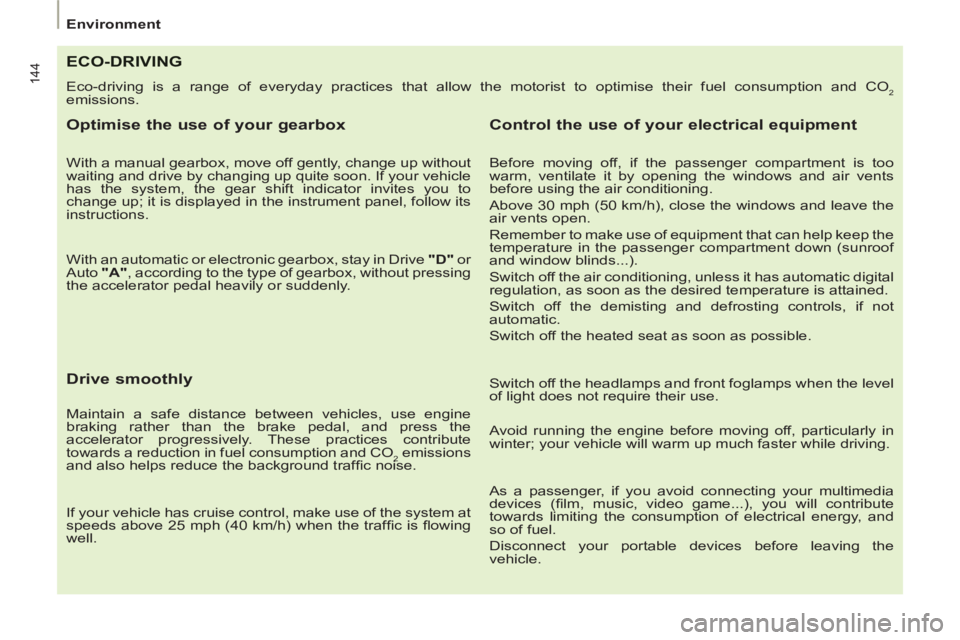Page 127 of 234

125
QUICK HELP
7
Changing a fuse
INSTRUMENT PANEL FUSES
- Open the lower glove box on the right-hand side.
- Pull the handle to open the cover and access the fuses.
N°
Rating
(Amps)
Functions
1
15
Rear wiper.
2
- Not used.
3
5
Airbag control unit.
4
10
Steering wheel angle sensor, Diagnostic socket, ESP sensor, Manual air conditioning, Clutch
switch, Headlamp beam height, Particle emission fi lter pump, Electrochromatic interior mirror.
5
30
Electric mirrors, Passenger's electric window motor, Sunroof row 1.
6
30
Front electric windows supply.
7
5
Courtesy lights, Glove box light, Courtesy mirror lights, Entertainment screen lights row 2.
8
20
Multifunction display, Anti-theft alarm siren, Audio equipment, Compact disc changer, Audio/
telephone, Diesel additive control unit, Tyre under-infl ation detection control unit, Sliding doors
module control unit.
9
30
Lighter.
10
15
Steering wheel switching, Trailer fuse box.
11
15
Diagnostic socket, Ignition switch, Automatic gearbox (4-speed).
12
15
Driver's seat memory unit, Passenger's electric seat, Airbag control unit, Parking assistance
control unit, Sliding side door buttons, Hands-free kit, Automatic gearbox (6-speed).
13
5
Engine fuse box, Trailer fuse box.
14
15
Rain sensor, Automatic air conditioning, Instrument panel, Sunroofs, Odometer warning lights
unit, Audio-telematics control.
15
30
Passenger's lock locking.
16
30
Locking/unlocking of the accesses.
17
40
Heated rear screen.
Page 130 of 234

128
Changing a fuse
Fuse box
To access the fuses located in the
engine compartment (to the left of the
coolant reservoir):
- unclip the cover.
GINE COMPARTMENT
ENGIN
USES FUS
The designations communicated
only relate to the fuses which can
be changed by the user using
the pliers and spare fuses, located in
the glove box behind the instrument
panel fuse box, on the right-hand side.
For any other work, visit a PEUGEOT
dealer.
Carefully close the cover when you
have fi nished.
The electrical system of your vehicle is
designed to operate with standard or
optional equipment.
Before installing other electrical
equipment or accessories on your
vehicle, consult a PEUGEOT dealer.
PEUGEOT will not accept
responsibility for the cost incurred in
repairing your vehicle or for rectifying
the malfunctions resulting from the
installation of accessories not supplied
and not recommended by PEUGEOT
and not installed in accordance with
its instructions, in particular where the
equipment in question consumes more
than 10 milliamperes. Intended for professionals: for full
fuse and relay information, consult the
"Methods" diagram via the PEUGEOT
network.
Page 225 of 234
141
VISUAL SEARC
H
10
Front interior
Instrument panels, dials,
counters 27-28
Warning lamps,
indicator lamps 29-33
Indicators, displays 34-36
Dimmer, trip recorder zero reset 36
Parking brake, handbrake 86 Heating, ventilation 54-58
- defrosting, demisting,
- air conditioning A/C,
- climate control,
- air recirculation.
Hazard warning lamps 86 In-car Technology Section 9
- Peugeot Connect Navigation
(RT6)
- Peugeot Connect Sound
Fittings 76-77
- cigarette lighter,
- glove box,
- cooled compartment,
- ashtray.
Interior fuses 124-125
Mirror, toll card,
car park ticket 81-82
Sun visor, mirror/
monitoring 81, 102
Courtesy lamp, interior lighting 80
Setting the date/time
Section 9
FRONT INTERIOR
Page 228 of 234

144
Environment
ECO-DRIVING
Eco-driving is a range of everyday practices that allow the motorist to optimise their fuel consumption and CO2
emissions.
Optimise the use of your gearbox
With a manual gearbox, move off gently, change up without
waiting and drive by changing up quite soon. If your vehicle
has the system, the gear shift indicator invites you to
change up; it is displayed in the instrument panel, follow its
instructions.
With an automatic or electronic gearbox, stay in Drive "D"
or
Auto "A"
, according to the type of gearbox, without pressing
the accelerator pedal heavily or suddenly.
Drive smoothly
Maintain a safe distance between vehicles, use engine
braking rather than the brake pedal, and press the
accelerator progressively. These practices contribute
towards a reduction in fuel consumption and CO
2 emissions
and also helps reduce the background traffi c noise.
If your vehicle has cruise control, make use of the system at
speeds above 25 mph (40 km/h) when the traffi c is fl owing
well.
Control the use of your electrical equipment
Before moving off, if the passenger compartment is too
warm, ventilate it by opening the windows and air vents
before using the air conditioning.
Above 30 mph (50 km/h), close the windows and leave the
air vents open.
Remember to make use of equipment that can help keep the
temperature in the passenger compartment down (sunroof
and window blinds...).
Switch off the air conditioning, unless it has automatic digital
regulation, as soon as the desired temperature is attained.
Switch off the demisting and defrosting controls, if not
automatic.
Switch off the heated seat as soon as possible.
Switch off the headlamps and front foglamps when the level
of light does not require their use.
Avoid running the engine before moving off, particularly in
winter; your vehicle will warm up much faster while driving.
As a passenger, if you avoid connecting your multimedia
devices (fi lm, music, video game...), you will contribute
towards limiting the consumption of electrical energy, and
so of fuel.
Disconnect your portable devices before leaving the
vehicle.
Page:
< prev 1-8 9-16 17-24